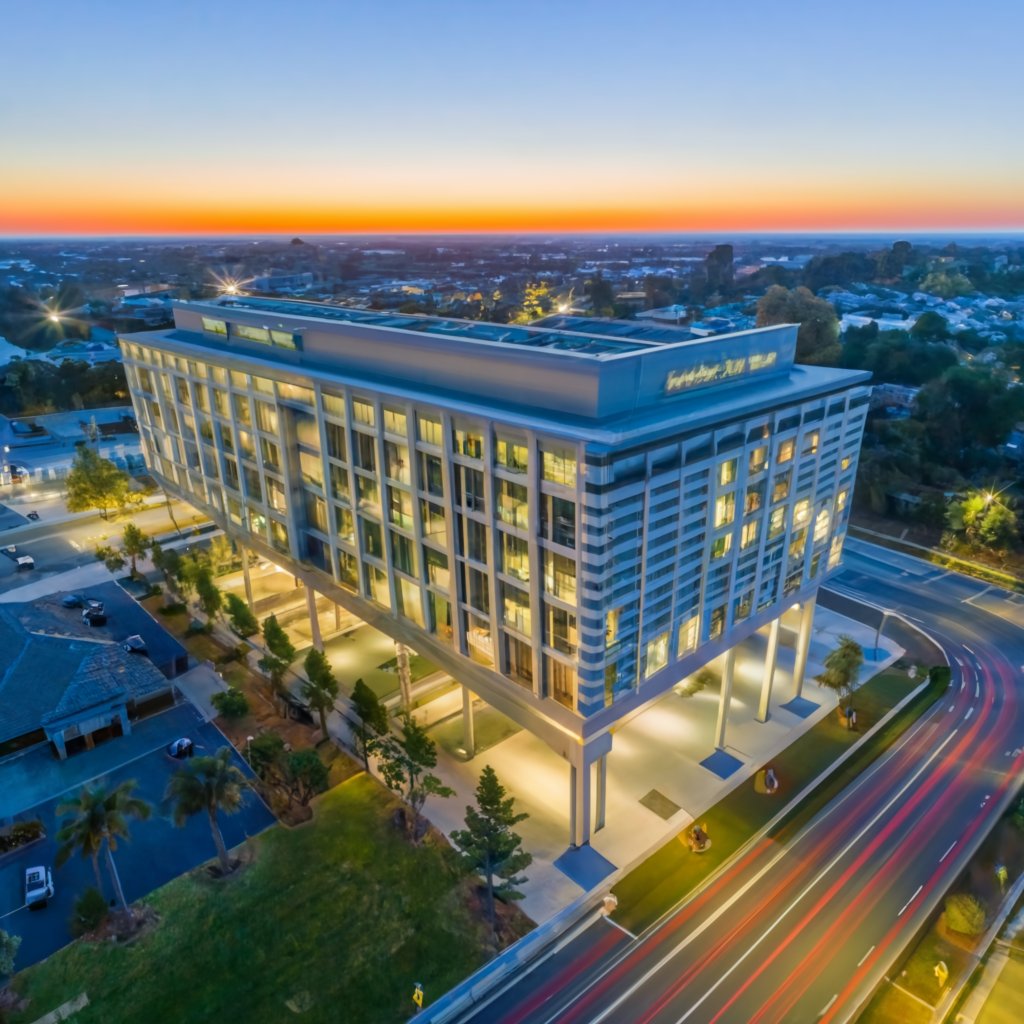
In the competitive world of commercial real estate, showcasing properties through high-quality visuals is crucial. One of the most impactful tools in modern real estate marketing is drone photography. Drones offer unique perspectives that traditional photography simply can’t match, providing potential buyers or investors with a comprehensive view of a property.
Power of Drone Photography
Commercial real estate drone photography allows for expansive aerial views, which can highlight a property’s location, layout, and surrounding area. This bird’s-eye view is invaluable for showcasing large properties, developments, or those with significant outdoor amenities. The dynamic angles and high-resolution images can make your property listings more attractive and engaging.
Plan Your Shoot Thoroughly
Before taking to the skies, detailed planning is essential. This includes:
Permits and Regulations: Ensure you have the necessary permissions and comply with local regulations. In many areas, commercial drone operations require specific licenses or permits.
Weather Conditions: Check the weather forecast to avoid windy, rainy, or overcast days that could affect image quality or safety.
Timing: Consider the time of day for optimal lighting. Early morning or late afternoon often provides the best natural light for aerial shots.
Invest in the Right Equipment
Choosing the right drone and camera equipment is crucial for achieving high-quality results:
Drone Specifications: Look for drones with stable flight capabilities, high-resolution cameras, and advanced stabilization systems. Models from DJI, such as the Mavic 3 or Phantom 4 Pro, are popular choices among real estate photographers.
Camera Settings: Use a camera with a high resolution (at least 4K) and set it to shoot in RAW format for the best image quality and post-processing flexibility.
Master Your Drone Flight Techniques
Skillful flying is essential to capture stunning imagery:
Smooth Movements: Execute smooth, gradual movements to avoid shaky footage and ensure professional-looking results. Practice maneuvers such as orbits, fly-throughs, and tracking shots.
Altitude and Angles: Experiment with different altitudes and angles to find the most flattering views of the property. Low-altitude shots can highlight landscaping, while higher altitudes provide an overview of the property and its surroundings.
Compose Your Shots Thoughtfully
Effective composition can significantly impact the visual appeal of your images:
Leading Lines and Symmetry: Utilize natural lines and symmetry within the property and its surroundings to create visually appealing shots. Roads, pathways, and building lines can guide the viewer’s eye through the image.
Focus on Key Features: Highlight the property’s most attractive features, such as unique architectural elements, expansive outdoor spaces, or proximity to landmarks.
Utilize Editing Software
Post-processing is crucial to enhance the final product:
Color Correction: Adjust colors to ensure they are true-to-life and enhance the overall aesthetic of the images. Tools like Adobe Lightroom or Photoshop can help with this.
Cropping and Framing: Crop images to remove any unwanted elements and frame them to emphasize the property best aspects.
Incorporate Video Footage
In addition to still images, consider including video footage for a more dynamic presentation:
Flythroughs and Cinematic Shots: Create engaging video content that includes flythroughs of the property, highlighting its layout and key features. Use smooth transitions and cinematic techniques to keep viewers engaged.
Add a Soundtrack: Background music or a narrated description can enhance the video’s appeal and provide additional context about the property.
Ensure Safety and Compliance
Safety should always be a top priority when operating drones:
Avoid No-Fly Zones: Be aware of and avoid restricted airspace. Many urban areas have no-fly zones that must be adhered to.
Check for Obstacles: During your flight, watch out for obstacles such as power lines, trees, or other structures that could interfere with the drone’s path or pose a risk.
Present Your Work Professionally
The way you present your drone photography can make a significant difference in its impact:
Create a Portfolio: Assemble a portfolio of your best drone shots to showcase your skills to potential clients. Include before-and-after comparisons to demonstrate the value of drone photography.
Share on Multiple Platforms: Utilize various platforms to share your work, including social media, property listing sites, and your own website. High-quality images and videos can attract more attention and generate leads.
Keep Up with Trends and Technology
The field of drone photography is constantly evolving:
Stay Updated: Keep abreast of new technology, software updates, and industry trends to maintain a competitive edge.
Continuing Education: Participate in workshops, webinars, or training sessions to refine your skills and learn about new techniques or regulations.
Commercial real estate drone photography offers a powerful way to showcase properties from stunning perspectives that traditional photography california services cannot achieve. By following these best practices—thorough planning, investing in the right equipment, mastering flight techniques, thoughtful composition, effective post-processing, incorporating video footage, ensuring safety and compliance, presenting work professionally, and staying updated with trends—you can produce high-quality, compelling visuals that captivate your audience and elevate your real estate marketing efforts.